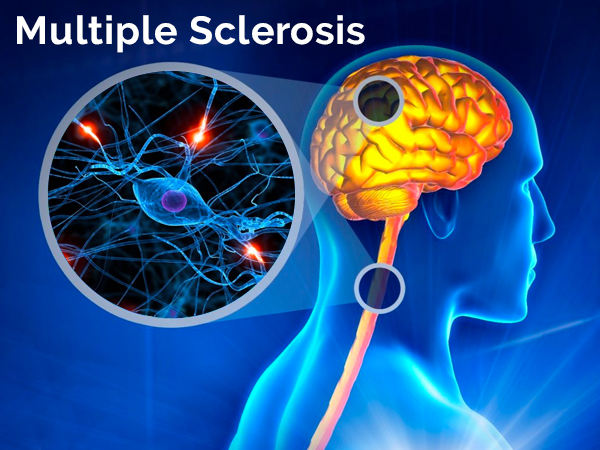Just In
- 3 hrs ago

- 5 hrs ago

- 8 hrs ago

- 12 hrs ago

Don't Miss
- Movies
 Cannes 2024 Ticket: What Is 77th Cannes Film Festival Ticket Price? Discover Jaw-Dropping Cost, DEETS Inside
Cannes 2024 Ticket: What Is 77th Cannes Film Festival Ticket Price? Discover Jaw-Dropping Cost, DEETS Inside - Finance
 Emmforce Autotech IPO Debut April 23: Issue Size, Price Band, Check Details?
Emmforce Autotech IPO Debut April 23: Issue Size, Price Band, Check Details? - Education
 NLSIU Announces the Rajiv K. Luthra Foundation Grant
NLSIU Announces the Rajiv K. Luthra Foundation Grant - Technology
 Dell Introduces AI-Powered Laptops and Mobile Workstations for Enterprises in India
Dell Introduces AI-Powered Laptops and Mobile Workstations for Enterprises in India - News
 Electoral Bonds Controversy: Amit Shah Slams Rahul Gandhi, Asks Opposition Too Got Money, Is It Extortion?
Electoral Bonds Controversy: Amit Shah Slams Rahul Gandhi, Asks Opposition Too Got Money, Is It Extortion? - Sports
 T20 World Cup: 'He will definitely be in my list' - Anjum Chopra handpicks 2 wicketkeeper-batters for India squad
T20 World Cup: 'He will definitely be in my list' - Anjum Chopra handpicks 2 wicketkeeper-batters for India squad - Automobiles
 Tata Motors To Manufacture Jaguar Land Rover Cars In Billion Dollar TN Plant - Report
Tata Motors To Manufacture Jaguar Land Rover Cars In Billion Dollar TN Plant - Report - Travel
 Journey From Delhi To Ooty: Top Transport Options And Attractions
Journey From Delhi To Ooty: Top Transport Options And Attractions
Multiple Sclerosis: Causes, Symptoms, Diagnosis And Treatment
Multiple sclerosis (MS) is a chronic disease [1] that affects the brain and central nervous system of the body. It ruptures myelin (an insulating layer around nerves) of the brain cells and spinal cord and interrupts the signal exchange between the brain and different parts of the body. Eventually, multiple sclerosis can cause permanent damage to the nerve cells [1] .
Some people will experience mild symptoms while others will experience severe symptoms. Its effect depends upon the amount of nerve damage and the area of the brain where nerves are affected. Let's scroll below to know more about this potentially disabling disease.

What Is Multiple Sclerosis?
The central nervous system consists of nerve fibre which is protected by an insulating cover known as myelin. Myelin allows electric pulses or say, electronic messages to transmit between the brain and the body [2] .
Multiple sclerosis is an autoimmune disorder in which the immune system of our body mistakes myelin as a foreign body and attacks it considering it as a virus or bacteria. This causes damage in multiple areas of the myelin hence, leaving a scar, or sclerosis. Medical experts named them as plaques or lesions.
The damage in the myelin sheath interrupts with the signal exchange between the brain and the body [3] and generally harms
- the spinal cord,
- eyes (the optic nerves),
- the cerebellum and
- the brain stem.
As more plaques develop during MS, more nerve fibres present in the brain break down and interrupt with the signal process. This results in the disability of certain important functions.
Types Of Multiple Sclerosis
Since the nerve damage varies in each person with MS, the illness caused due to the same also varies. Medical experts have identified some of these types as they are important to predict the severity of the disease and its similar treatments.
There are 4 types of multiple sclerosis [4] :
1. Relapsing-remitting multiple sclerosis: Out of the total people suffering from MS, around 85% have relapsing-remitting MS. The first sign of this disease occurs to them in their early 20s and later they experience episodes of MS symptoms from time to time (called relapses) followed by remissions period during which the MS symptoms vanish totally or partially.
2. Primary progressive multiple sclerosis (PPMS): In PPMS, the condition of a person gets worse over time. Around 10-15% of MS-suffering patients will have primary progressive multiple sclerosis. It leads to an earlier disability in compare to the other types.
3. Secondary progressive multiple sclerosis (SPMS): In SPMS, symptoms will be steady at first but typically after 10-20 years, it makes a gradual shift and starts progressing. It becomes hard to handle as the symptoms increase making it tough to treat.
4. Progressive relapsing: It is a rare form of multiple sclerosis affecting less than 5% of people. It is progressive from an early stage and its symptoms worsen along the way. It has no remission period.
Causes And Risk Factors Of Multiple Sclerosis
There are many factors that cause multiple sclerosis. The exact reason for the cause of multiple sclerosis is still unknown to doctors.
1. Genes: Genes can be responsible for MS [5] . It doesn't mean that you get it from your parents but the risk factors could be present in your genes. Scientists believe that some people are born with something in their genes that react to the triggers of MS once they are exposed to it.
2. Environment: The environment in which we live can also be the cause of MS [6] . This disease is most likely to affect people who reside in certain places or belong to certain ethnic groups. Multiple sclerosis is common in colder regions like Scandinavia and Scotland as they stay quite far from the equator. Smoking [15] and deficiency of vitamin D [9] can also be the reason for MS.
3. Sex hormones: Sex hormones can affect the immune system or be affected by the same. In women, the two hormones progesterone and oestrogen suppress the immune system while in men, the primary sex hormone testosterone is responsible. Studies show that women are more likely to get exposed to MS and this rate is nearly four times more than men [7] .
4. Viruses: Scientists found that viruses [8] from the Herpesviridae or Herpes family are responsible for triggering multiple sclerosis. It was found that people who have this disease have a kind of protein in their spinal fluid which is similar to the one found in people who were suffering from a nervous system disorder caused due to the same virus of this particular family. But, the research is still going on to prove it.
5. Autoimmune disorders: If a person has certain autoimmune disorders like inflammatory bowel disease, they are more likely to get affected by this disease [1] .
Symptoms Of Multiple Sclerosis
Brain is like a central computer that controls the activities of all parts of the body. When damage occurs in the brain, it likely affects all the body parts and causes multiple symptoms. The symptoms are as follows:
1.
Blurry
vision/double
vision
2.
Immobility
or
less
coordination
3.
Numbness
4.
Depression
5.
Poor
digestion
6.
Muscle
spasm
7.
Sexual
issues
like
vaginal
dryness
(women)
and
erection
problems
(men)
8.
Feeling
tired
all
the
time
9.
Decrease
in
focus
or
concentration
10.
An
electric
shock-like
feeling
from
head
to
spine
11.
Tingling
12.
Change
in
walking
pattern
13.
Dizziness
14,
Speech
problems
15.
Tremors
or
shaking
of
body
parts
Diagnosis Of Multiple Sclerosis
The diagnosis of multiple sclerosis can be challenging as there is no specific test to determine it. The symptoms of MS are similar to the symptoms of other diseases and so, they have to be ruled out to confirm if a person has MS or not.
Here're the tests to diagnose multiple sclerosis:
1. MRI (Magnetic Resonance Imaging): It is an imaging test that shows a closer look of the brain to the doctor. On the image, they can look out for any signs of inflammation in the dense areas of the brain. MRI cannot give the exact proof of multiple sclerosis as the spots in the brain due to MS is similar to those of high blood pressure and diabetic patients.

2. Blood test: In order to rule out diseases with symptoms similar to MS, a blood test is done. This test looks out for specific biomarkers which are associated with multiple sclerosis. However, this test does not give the exact proof for MS.
3. Spinal tap (lumbar puncture): In spinal tap, a small sample of spinal canal fluid is checked for some abnormalities in their antibodies which are often linked to MS. This test often helps in diagnosing other infectious diseases whose symptoms are similar to MS.
4. Evoked potential tests: This test is used to determine the damage done by MS to other parts of the body that helps us to see, feel, and hear. In this process, doctors record the electronic signals produced by the brain when a certain stimulus is evoked like watching a certain video, hearing certain clicks, or receiving any short electric pulses in legs or arms. The test measures the speed of electric signals from the brain to the nerves.
Complications Associated With Multiple Sclerosis
Complications associated with multiple sclerosis are as follows:
1.
Muscle
spasm,
known
as
myoclonus
2.
Mental
issues
like
mood
swings,
amnesia
3.
Epilepsy
4.
Paralysis,
mostly
in
legs
5.
Bowel
or
sexual
dysfunction
Treatments For Multiple Sclerosis
The treatment of multiple sclerosis focuses mainly on speedy recovery from attacks, slowing down the disease, and restricting its symptoms as there is no exact cure for this chronic disease.
1. Treatment for multiple sclerosis attacks
Corticosteroids: They are prescribed to reduce nerve inflammation.
Plasmapheresis: It is also known as plasma exchange. In this process, plasma from the blood cells is separated, then mixed with albumin and placed back into the body.
2. Treatment for multiple sclerosis to reduce the progression
For patients with PPMS, ocrelizumab is the only and best therapy as after the treatment, MS is less likely to progress while in other cases, the disease remains untreated. For RRMS too, several of these therapies are available.
3. Treatment for relapsing-remitting multiple sclerosis
Beta interferons and Glatiramer acetate drugs are injected beneath the skin to slow down the severity of relapses [11]
4. Oral treatment methods
Certain oral medicines like dimethyl fumarate, siponimod, teriflunomide [12] , and fingolimod is used to reduce relapses and slow its progression.

5. Infusion treatment methods
- Ocrelizumab: This medication is approved to treat both the primary progression and relapse-remitting forms of multiple sclerosis. It is given by an intravenous infusion [19] .
- Alemtuzumab: This drug helps in reducing relapses of MS by limiting the nerve damage occurred due to white blood cells [20] .
- Natalizumab: This medication restricts the movement of damaged immune cells to the brain and spinal cord through the bloodstream [21] .
- Mitoxantrone: This treatment is extremely limited in treating MS as it may result in developing blood cancer [22] .
Prevention Tips
There are certain prevention tips to relieve its symptoms. The prevention tips are as follows:
1.
Get
enough
rest
2.
Exercise
regularly
3.
Follow
a
healthy
diet
4.
Avoid
much
heat
exposure
or
using
devices
that
cause
the
body's
heat
to
rise
more.
5.
Relieve
stress
through
meditation,
yoga,
and
deep
breathing
[13]
.
Living With Multiple Sclerosis
A positive attitude towards life is all one needs to cope with this disease. Here're a few tricks to stay upbeat:
1.
Share
problems:
Share
your
problems
with
people
as
it
will
help
to
lighten
your
mental
load.
2.
Support
group:
Contact
a
support
group
as
they
have
people
living
with
the
same
disorder
as
yours.
In
this
way,
you
can
share
common
problems
and
get
some
ideas
to
handle
it
in
the
best
ways.
On 30th May every year, World Multiple Sclerosis Day is celebrated to raise awareness and share stories related to this disease.
3.
Counselling:
If
you
don't
want
to
open
up
to
people
about
your
disease,
counselling
privately
is
the
best
one
can
select
[14]
.
4.
Diary
writing:
Keep
a
diary
and
mention
all
your
feelings.
In
this
way,
you
can
express
yourself
better.
5.
Take
control
of
your
life:
Even
you
are
suffering
from
this
chronic
disease,
don't
rely
on
others
for
everything.
Take
control
of
a
few
things
in
your
life
and
see
the
change.
- [1] Ghasemi, N., Razavi, S., & Nikzad, E. (2017). Multiple Sclerosis: Pathogenesis, Symptoms, Diagnoses and Cell-Based Therapy.Cell journal,19(1), 1–10. doi:10.22074/cellj.2016.4867
- [2] Morell, P., Quarles, R. H., & Norton, W. T. (1999). Myelin formation, structure, and biochemistry.Basic neurochemistry, 117-143.
- [3] Duncan, I. D., & Radcliff, A. B. (2016). Inherited and acquired disorders of myelin: The underlying myelin pathology.Experimental neurology,283(Pt B), 452–475. doi:10.1016/j.expneurol.2016.04.002
- [4] Goldenberg M. M. (2012). Multiple sclerosis review.P & T : a peer-reviewed journal for formulary management,37(3), 175–184.
- [5] Oksenberg, J. R., Baranzini, S. E., Sawcer, S., & Hauser, S. L. (2008). The genetics of multiple sclerosis: SNPs to pathways to pathogenesis.Nature Reviews Genetics,9(7), 516.
- [6] Ascherio, A., & Munger, K. L. (2007). Environmental risk factors for multiple sclerosis. Part I: the role of infection.Annals of neurology,61(4), 288-299.
- [7] Duquette, P., Pleines, J., Girard, M., Charest, L., Senecal-Quevillon, M., & Masse, C. (1992). The increased susceptibility of women to multiple sclerosis.Canadian Journal of Neurological Sciences,19(4), 466-471.
- [8] Gilden, D. H. (2005). Infectious causes of multiple sclerosis.The Lancet Neurology,4(3), 195-202.
- [9] D’hooghe, M. B., Haentjens, P., Nagels, G., Garmyn, M., & De Keyser, J. (2012). Sunlight exposure and sun sensitivity associated with disability progression in multiple sclerosis.Multiple Sclerosis Journal,18(4), 451-459.
- [10] Wingerchuk D. M. (2012). Smoking: effects on multiple sclerosis susceptibility and disease progression.Therapeutic advances in neurological disorders,5(1), 13–22. doi:10.1177/1756285611425694
- [11] Limmroth, V., Putzki, N., & Kachuck, N. J. (2011). The interferon beta therapies for treatment of relapsing-remitting multiple sclerosis: are they equally efficacious? A comparative review of open-label studies evaluating the efficacy, safety, or dosing of different interferon beta formulations alone or in combination.Therapeutic advances in neurological disorders,4(5), 281–296. doi:10.1177/1756285611413825
- [12] Antochi F. (2013). Teriflunomide - a new oral agent for multiple sclerosis treatment.Maedica,8(4), 404–405.
- [13] Artemiadis, A. K., Vervainioti, A. A., Alexopoulos, E. C., Rombos, A., Anagnostouli, M. C., & Darviri, C. (2012). Stress management and multiple sclerosis: a randomized controlled trial.Archives of Clinical Neuropsychology,27(4), 406-416.
- [14] Mazaheri, M., Fanian, N., & Zargham-Boroujeni, A. (2011). Experiences of patients with multiple sclerosis from group counseling.Iranian journal of nursing and midwifery research,16(2), 181–190.
- [15] Wingerchuk D. M. (2012). Smoking: effects on multiple sclerosis susceptibility and disease progression. Therapeutic advances in neurological disorders, 5(1), 13–22. doi:10.1177/1756285611425694
- [16] Scalfari, A., Knappertz, V., Cutter, G., Goodin, D. S., Ashton, R., & Ebers, G. C. (2013). Mortality in patients with multiple sclerosis. Neurology, 81(2), 184-192.
- [17] Amezcua, L., Rivas, E., Joseph, S., Zhang, J., & Liu, L. (2018). Multiple sclerosis mortality by race/ethnicity, age, sex, and time period in the United States, 1999–2015. Neuroepidemiology, 50(1-2), 35-40.
- [18] Flensner, G., Ek, A. C., Söderhamn, O., & Landtblom, A. M. (2011). Sensitivity to heat in MS patients: a factor strongly influencing symptomology--an explorative survey. BMC neurology, 11, 27. doi:10.1186/1471-2377-11-27
- [19] Mulero, P., Midaglia, L., & Montalban, X. (2018). Ocrelizumab: a new milestone in multiple sclerosis therapy. Therapeutic advances in neurological disorders, 11, 1756286418773025. doi:10.1177/1756286418773025
- [20] Willis, M. D., & Robertson, N. P. (2016). Alemtuzumab for Multiple Sclerosis. Current neurology and neuroscience reports, 16(9), 84. doi:10.1007/s11910-016-0685-y
- [21] Brandstadter, R., & Katz Sand, I. (2017). The use of natalizumab for multiple sclerosis.Neuropsychiatric disease and treatment,13, 1691–1702. doi:10.2147/NDT.S114636
- [22] Boneschi, F. M., Vacchi, L., Rovaris, M., Capra, R., & Comi, G. (2013). Mitoxantrone for multiple sclerosis. Cochrane Database of Systematic Reviews, (5).
-
 diet fitnessMultiple Sclerosis Diet Plan: Foods To Eat And Foods To Avoid
diet fitnessMultiple Sclerosis Diet Plan: Foods To Eat And Foods To Avoid -
 wellnessCheck For These Warning Signs Of Multiple Sclerosis
wellnessCheck For These Warning Signs Of Multiple Sclerosis -
 wellness7 Must Know Facts About Multiple Sclerosis
wellness7 Must Know Facts About Multiple Sclerosis -
 disorders cureMultiple Sclerosis Patient Should Exercise
disorders cureMultiple Sclerosis Patient Should Exercise -
 prenatalWomen Who Are Pregnant Over Summer Have Healthier Babies
prenatalWomen Who Are Pregnant Over Summer Have Healthier Babies -
 disorders cureSystemic Lupus Erythematosus: Causes, Symptoms, Complications, Treatments And Prevention
disorders cureSystemic Lupus Erythematosus: Causes, Symptoms, Complications, Treatments And Prevention -
 disorders cureMiss Universe 2021 Harnaaz Sandhu Suffers From Celiac Disease: All About The Medical Condition
disorders cureMiss Universe 2021 Harnaaz Sandhu Suffers From Celiac Disease: All About The Medical Condition -
 disorders cureGoodpasture Syndrome (GPS): Causes, Symptoms, Diagnosis And Treatment
disorders cureGoodpasture Syndrome (GPS): Causes, Symptoms, Diagnosis And Treatment


 Click it and Unblock the Notifications
Click it and Unblock the Notifications



